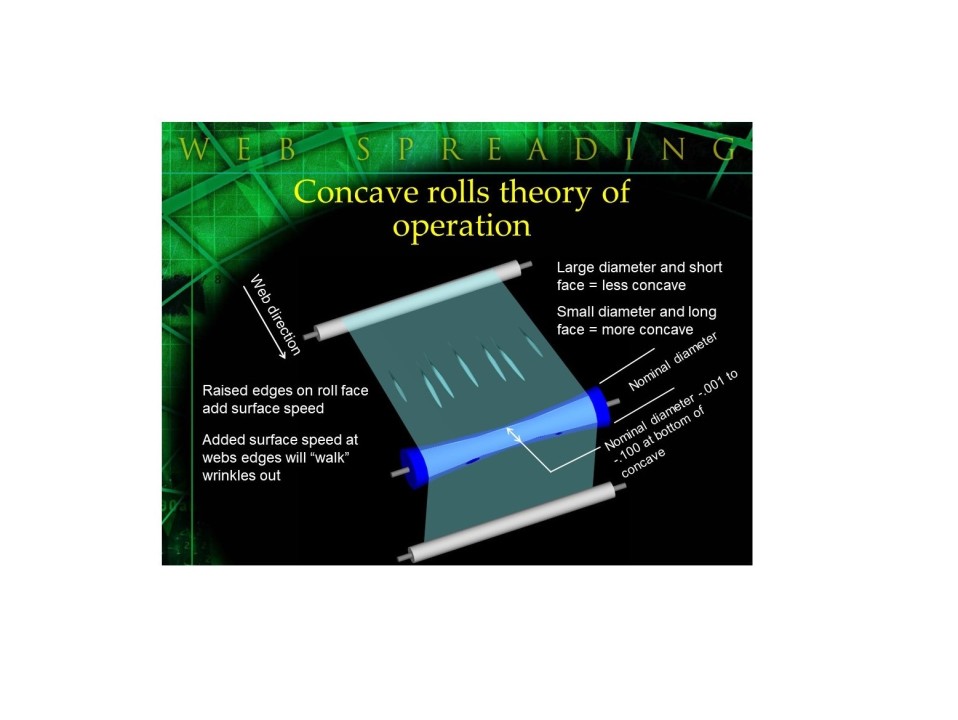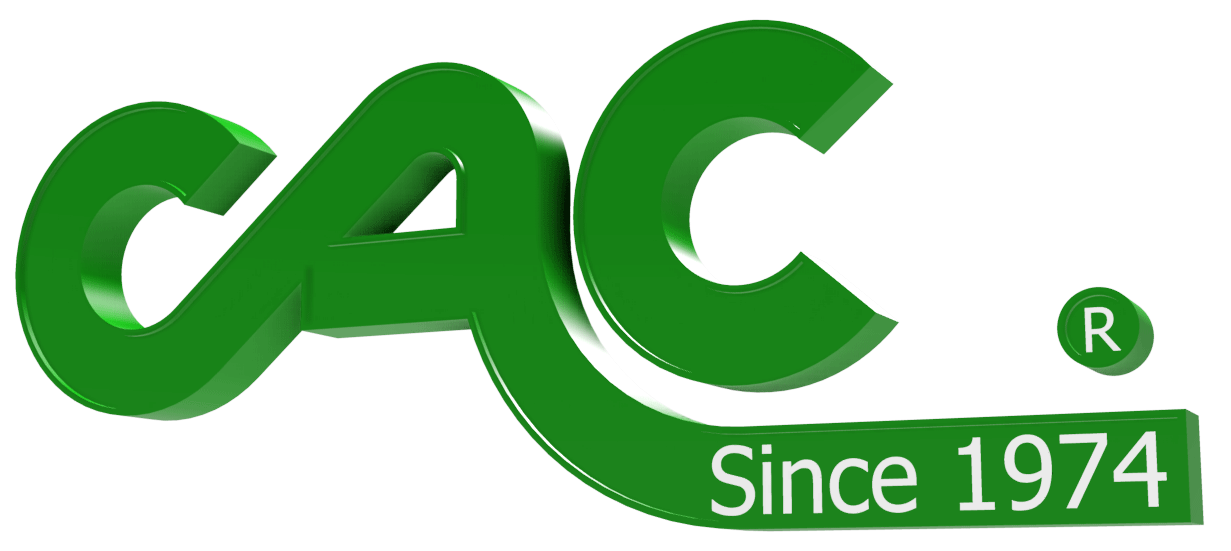
How Crowned and Concave Rollers Work

Crowned Spreader Roller
Description:
A crowned spreader roller can be manufactured from a variety of materials, such as steel, aluminum, stainless steel or plated aluminum or steel and can be rubber covered. Although crowned rollers with a rubber surface are the most common, it is not necessary for every application that the surface to be rubber. A crowned spreader roller has an arced surface across its face with the arc sweeping from the ends out toward the center of the roller face. The ends of the roller face are the smallest diameter while the roller diameter increases in equal increments across its’ face to the center. The roller face diameter variance is strictly application dependent. However, it can be generally stated that the bigger the roller diameter, the less the variance. The longer the roller face the more the variance. Extreme variances may be .001” for a large diameter, short face roller and a .100” variance for a small diameter long face roller.

Theory of operation:
By varying the roller diameter across the face of the roller (roller is arced outward across its’ face), tension will vary across the roller face. The increased tension toward the center of the roller will cause tensile stress in the center of the web forcing wrinkles to be pushed out from the center toward the roller face ends.

Recommended wrap angle varies greatly with this type of spreader roller. Typical wrap angles may range between 30° - 180°. Greater degrees of wrap angle will cause greater effect on the web. Spreading may increase with greater amounts of wrap, but the occurrence of web distortion will also increase.
Advantages:
- This type of spreader roller has a smooth surface, so it will not mark the surface of a web.
- Most any machine shop, rubber roller manufacturer or idler roller manufacturer can machine a crowned roller. This makes this type of spreader roller one of the least expensive, most readily available types of spreader roller.
- Simplicity of design, with no special parts makes this spreader roller extremely easy to maintain.
- Crowned spreader rollers can be used with all types of materials. The amount of crown depends greatly on the type of web. More extensible materials, like films, will require a minimal amount of crown, where more rigid materials, like paper, will require more amount of crown.

Disadvantages:
- The theory of operation for this type of spreader roller is not completely sound. While the tension variance through roller diameter variance is true, the idea of this theory actually spreading the material is unfounded, especially for preventing or removing wrinkles under varying circumstances (see Causes of Web Wrinkles section). An example of this is that while this type of spreader roller may help with wrinkles caused by a baggy center by adding tension to the loose center area of the web, it may worsen the wrinkles caused by baggy edges because the center of the web is already tight. The tightness in the center of the web will only be increased with the use of this roller.
- Further reason why this type of spreader may do more harm than good is surface speed variance across its’ face. As this roller rotates, the surface speed at the smaller diameter roller face off center is actually less than in the center (this is the case because the diameter is smaller at the ends than in the center). Slower surface speed toward each end of the roller face can actually drive the web at a slower speed than the center, which will cause the material edges to move in the cross machine direction toward the center of the web (exactly opposite what a spreader roller is supposed to do).
- Because this roller is not linear across its’ face (while the web is or should be) it can stretch, distort and/or tear the center of the web.
- There is no set formula for the amount of crown for every application, so the amount of crown can only be determined through trial and error or past experience.

Concave Spreader Roller
Description:
A concave spreader roller can be manufactured from a variety of materials, such as steel, aluminum, stainless steel or plated aluminum or steel and can be rubber covered. A concave spreader roller has an arced surface across its face with the arc sweeping from the ends in toward the center of the roller face. The ends of the roller face are the largest diameter while the roller diameter decreases in equal increments across its’ face to the center. The roller face diameter variance is strictly application dependent. However, it can be generally stated that the bigger the roller diameter, the less the variance. The longer the roller face the more the variance. Extreme variances may be .001” for a large diameter, short face roller and a .100” variance for a small diameter long face roller.

Theory of operation:
By varying the roller diameter across the face of the roller (roller is arced inward across its face), surface speed will vary across the roller face. The increased surface speed toward the edges of the roller will cause wrinkles to “walk” out from the center toward the roller face ends.

Recommended wrap angle varies greatly with this type of spreader roller. Typical wrap angles may range between 30° - 180°. Greater degrees of wrap angle will cause greater effect on the web. Spreading may increase with greater amounts of wrap, but the occurrence of web distortion will also increase.
Advantages:
- This type of spreader roller has a smooth surface, so it will not mark the surface of a web.
- Most any machine shop, rubber roller manufacturer or idler roller manufacturer can machine a concave roller. This makes this type of spreader roller one of the least expensive, most readily available types of spreader roller.
- Simplicity of design, with no special parts makes this spreader roller extremely easy to maintain.
- Concave spreader rollers can be used with all types of materials. The amount of concave profile depends greatly on the type of web. More extensible materials, like films, will require a minimal amount of concave profile, where more rigid materials, like paper, will require more amount of concave profile.

Disadvantages:
- While the theory of operation for this type of spreader roller is sound. It may not work or it may even compound certain wrinkling conditions. An example of this is that even though this spreader roller relies on surface speed differential across its’ face (not tension variation, as in the case of the crowned roller) to spread the web, tension variations will occur across the web because the roller face is not linear. This roller will probably perform well for baggy edges type wrinkles – the roller diameter being larger toward the roller face ends adding tension to the loose edges. It could compound the problem for baggy center type wrinkles – the roller face profile worsening the looseness in tension, in the center of the web.
- Because this roller is not linear across its’ face (while the web is or should be) it can stretch, distort and/or tear the edges of the web.
- There is no set formula for the amount of concave profile requirement for every application, so the amount of concave profile can only be determined through trial and error or past experience.

News No. 60
|
 (800) 433-2413
(800) 433-2413

 Please wait
Please wait




